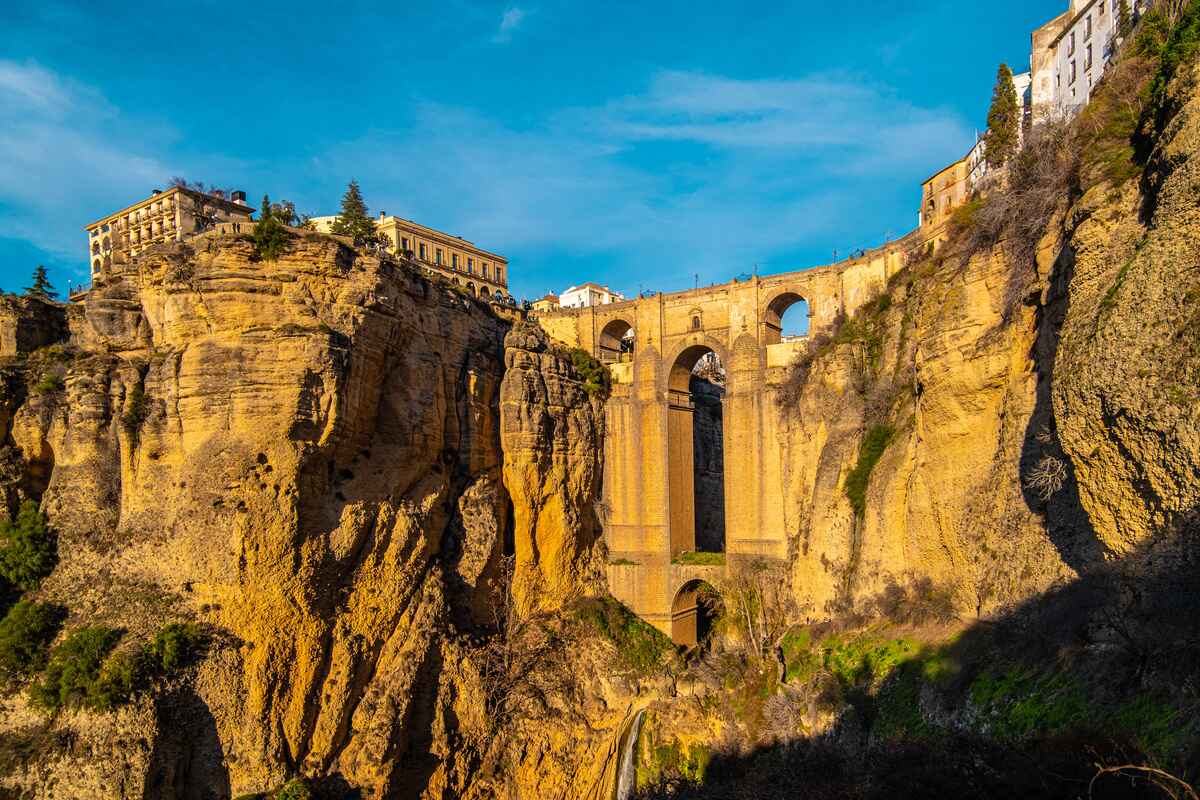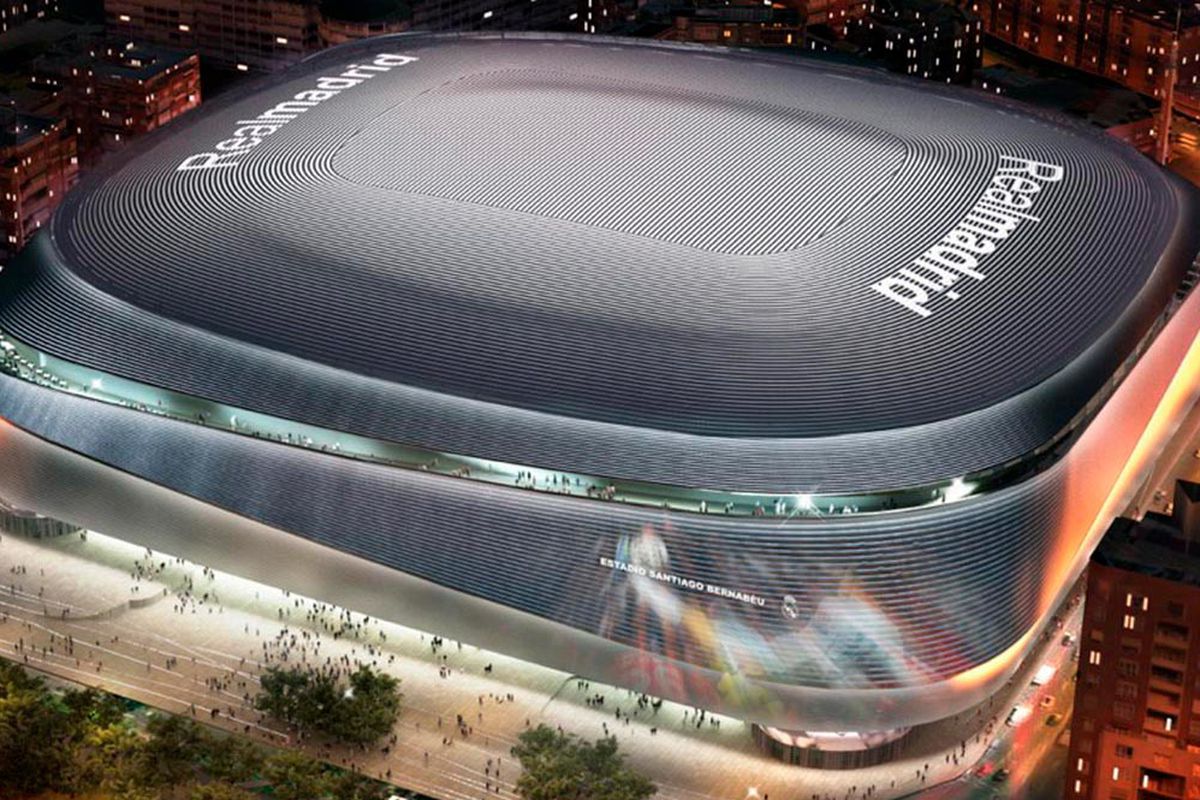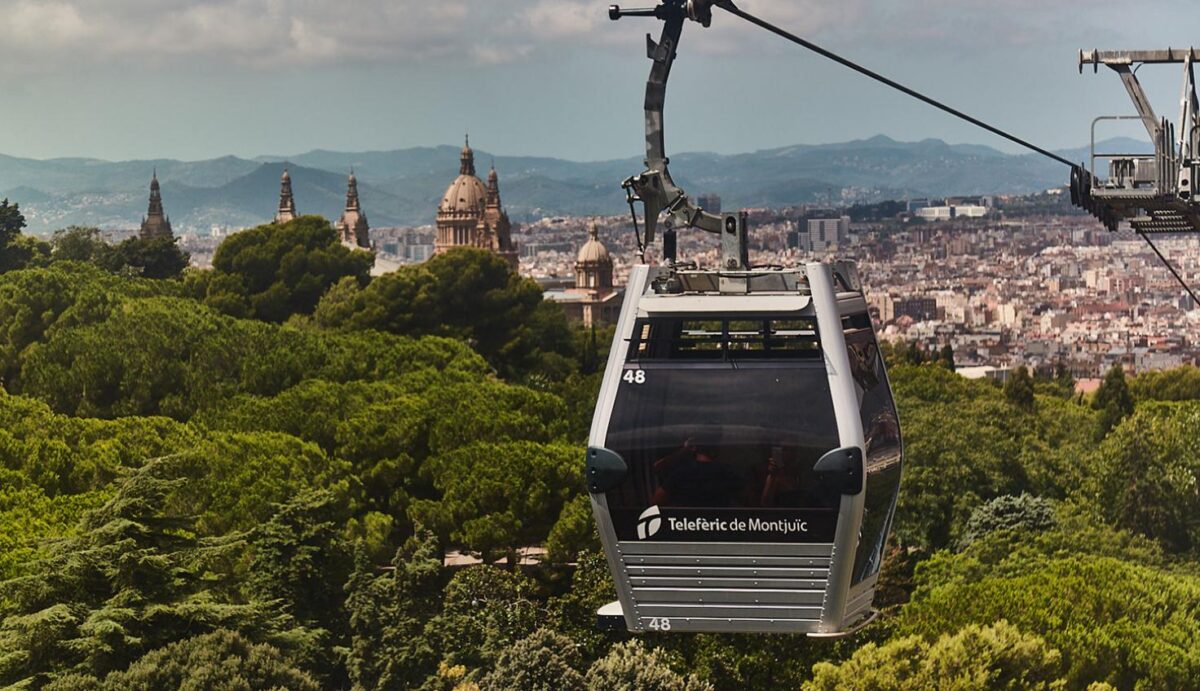The New Ronda Bridge — what to see, history, interesting facts
![]()
Puente Nuevo in Ronda is one of the significant architectural landmarks of Andalusia. This three-arch stone bridge was built in the 18th century and is one of Spain’s most impressive engineering structures.
Puente Nuevo Ronda
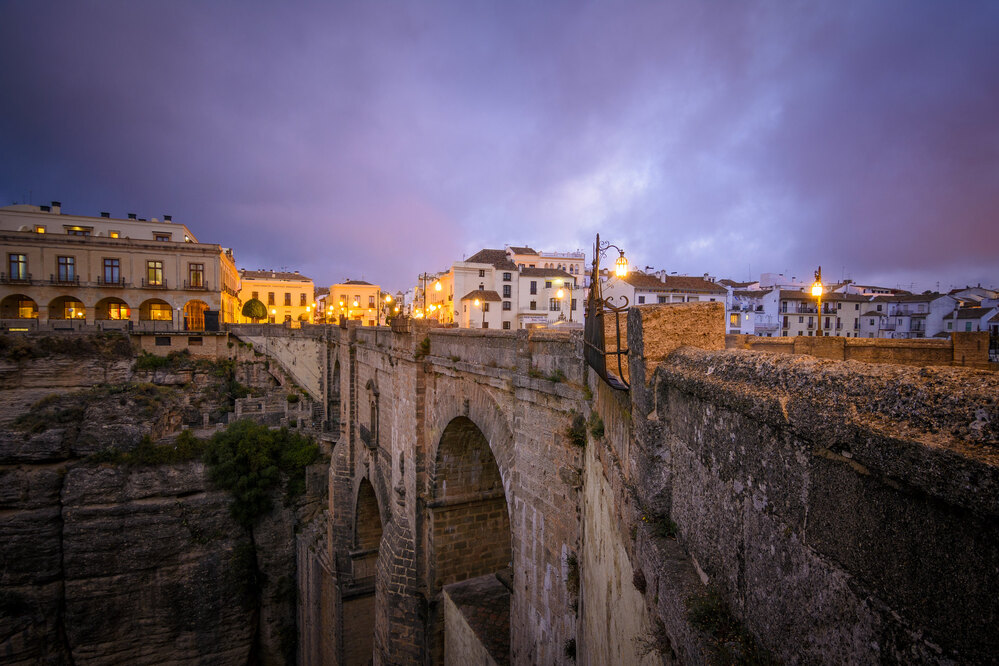
The famous Puente Nuevo (New Bridge) is a must-visit tourist location. It offers beautiful views that will give you an unforgettable impression and experience.It is one of three Ronda bridges over the 120-meter-deep El Tajo Gorge, where the Guadalevín River flows. It was made to connect El Mercadillo (New City), built in the 15th century, and La Ciudad (Old City), founded under Moorish rule. La Ciudad and El Mercadillo are located on the same level, so from the streets, even a few tens of meters away, neither the bridge nor the gorge is visible.
Like any large object, the New Ronda Bridge is best admired from a distance. You should go east, towards the Old Bridge (Puente Viejo Ronda). There are several viewing platforms with excellent views of Puente Nuevo. Also, visit La puerta de Cristo (Gate of Christ) for spectacular views.
Technical characteristics of the New Ronda Bridge
- The total length of Puente Nuevo is 66 meters.
- The height is 98 meters, which is the level of a 30-story building.
- Number of spans — 3.
- Material — polished stone of particularly hard grades.
Viewpoint Puente Nuevo Ronda
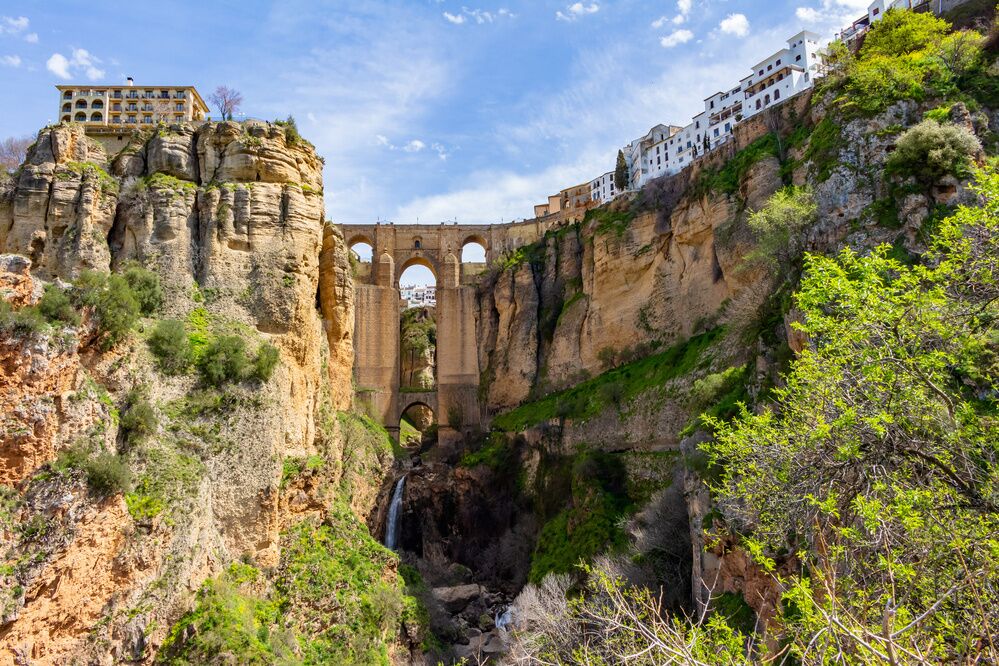
The most stunning view of the bridge is from the bottom of El Tajo Gorge. You can go down there along a walking trail. To find it, walk from Puente Nuevo towards La Ciudad, after the bridge, immediately turn right and continue to Plaza María Auxiliadora. Make another right and the trailhead will be in front of you.
In addition, you can go down to the Mirador de Ronda observation deck. It is located approximately 100 meters below the structure. At sunset, breathtaking panoramas of the bridge, gorge, valley, and waterfalls open up from here.
Tip: The descent is easier to do in sports shoes and not during the peak of the heat.
Read also: What to see and do in Ronda, the white city above the gorge
Other bridges in Ronda
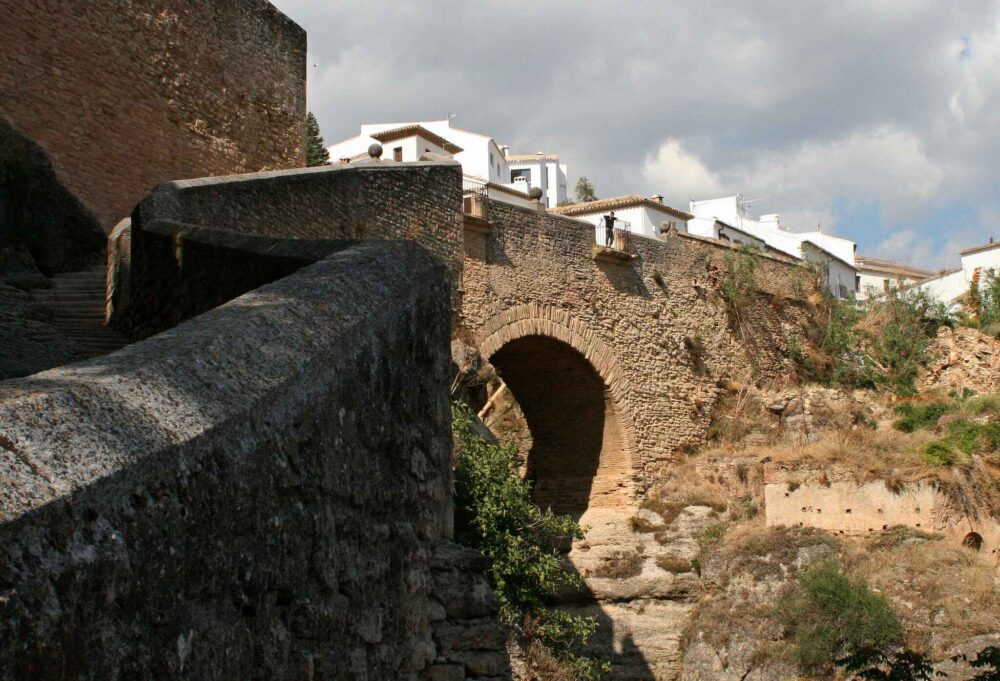
The new Ronda bridge is the latest and highest. Earlier: Puente Romano, built in the 13th century at an altitude of 12 meters above the river, and Ponte Vecchio, built in the 17th century at an altitude of 31 meters. The latter is also often called the Arab Bridge — Ponte Arabo.
At the same time, Ponte Vecchio in Ronda translates as “Old Bridge”. But despite its name, it is newer than Puente Romano (“Roman Bridge”).
History of the New Bridge of Ronda
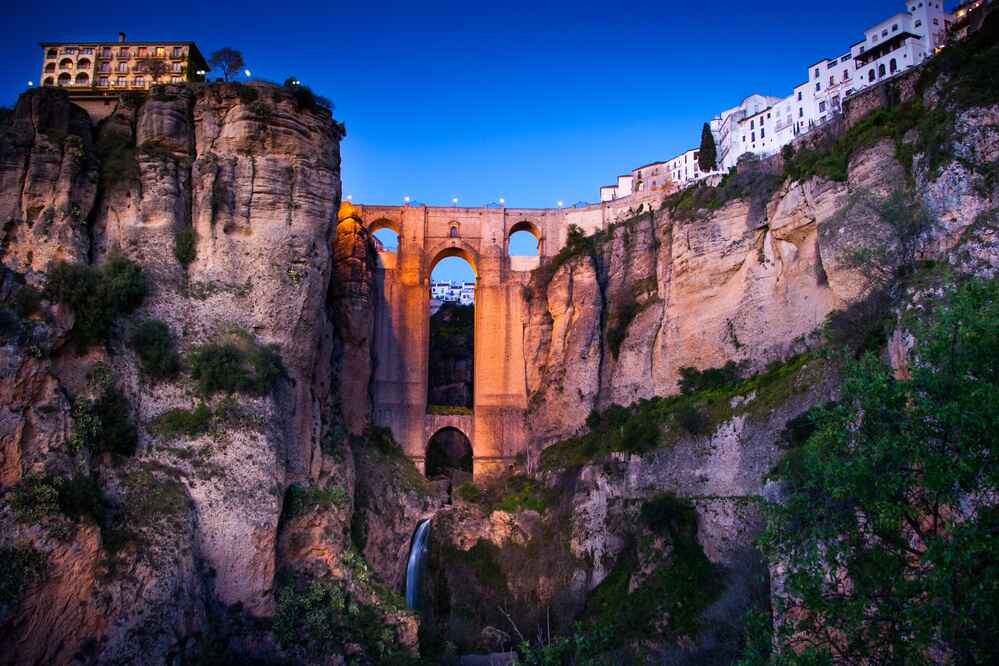
At the beginning of the 18th century, Ronda was divided on both sides of the gorge, which became a natural obstacle to communication between the two parts of the city. Therefore, in 1735, construction of the bridge began. The architects of the project were Jose Garcia and Juan Camacho. It was planned to build the bridge with a single-arched structure. Its construction was completed in eight months, but, not even standing for a full five years, in 1741 the bridge collapsed and claimed the lives of 50 people.
They decided to build the next ponte in Ronda only in 1759. Its first architect was Domingo Lois de Monteagudo, a famous engineer of the time. He supervised the project until 1778, completing the lower third of the structure. After a long break, another best specialist in Andalusia was brought in, and José Martin de Aldehuela became the second lider-architect of the Puente Nuevo. It was he who completed its construction in 1793.
When designing the New Ronda Bridge, they took a completely different approach to the design of the structure. Instead of a single arch opening as before, three arches were now used to support the bridge, making it much stronger and more stable.
Above the central arch of the Ronda Bridge, there is a room of about 60 m². At different times it had different purposes. During the civil war of 1936–1939, there was a prison here, which was used as a torture chamber for prisoners. Some of the prisoners were thrown out of the window onto the rocks at the bottom of the gorge. Later this room was a bar, and now it is a museum.
Ronda Bridge is one of the most photographed man-made landmarks in Spain.
Museum of Interpretation Puente Nuevo (Centro de Interpretación del Puente Nuevo)
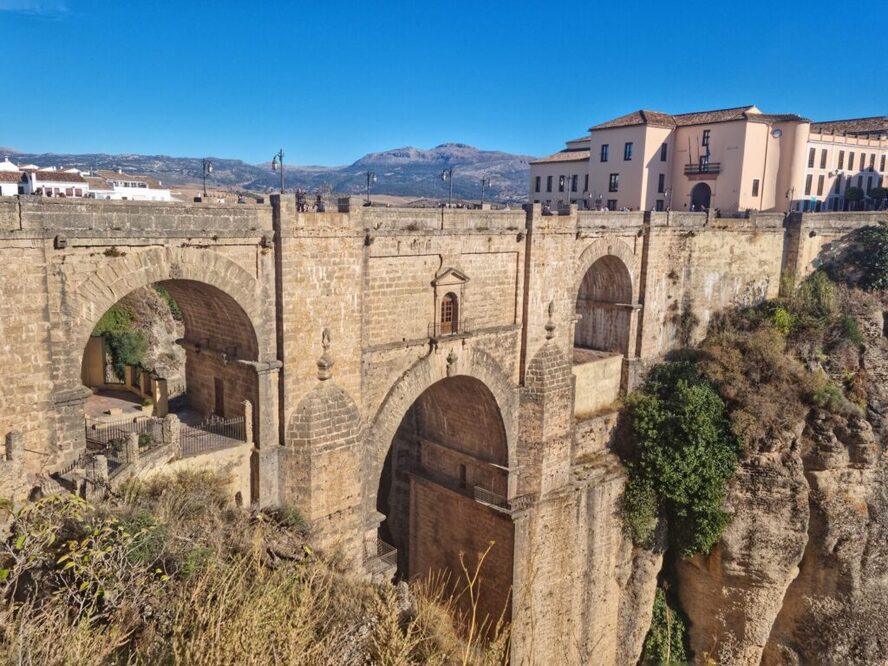
In the room above the central arch, there is a small museum dedicated to Ronda’s most famous ponte. Here you can see an interesting audiovisual installation, as well as a wonderful series of images related to the bridge and the city.
Plan your visit to the Ronda New Bridge Museum. Its opening hours depend on the season.
Autumn and winter:
- From Monday to Friday — from 10:00 a.m. to 6:00 p.m.
- Saturday, Sunday, and holidays — from 10:00 a.m. to 3:00 p.m.
In spring and summer:
- From Monday to Friday — from 10:00 a.m. to 7:00 p.m.
- On Saturday, Sunday, and holidays — from 10:00 a.m. to 3:00 p.m.
Entry price: 2.50 euros per person. Children and groups of visitors exceeding 10 people pay 1 euro.
How to get to Puente Nuevo Ronda

Ronda is located 90 kilometers from Malaga. You can get here by car along the A-366 road.
GPS location:
Latitude: 36.740724 (36° 44′ 26.61″ N)
Longitude: -5.165940 (5° 9′ 57.38″ W)
You can also come to Ronda from Malaga by bus or train.
Bus: travel time — 1 hour 45 minutes. 10 departures per day from Malaga bus station and arrival in Ronda at Ronda bus station.
Train: travel time — 2 hours 42 minutes. 1 departure per day from Malaga María Zambrano station and arrival at the train station in Ronda.
Ronda is the most popular day trip destination from Malaga.
New bridge on the map of Ronda
Interesting facts about Ronda Bridge
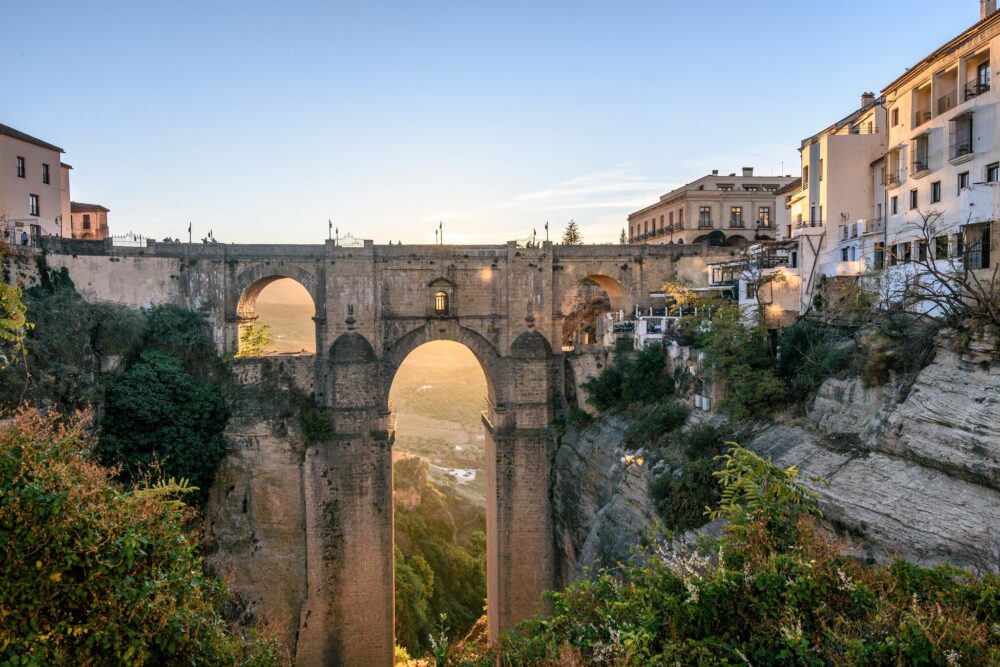
- Ronda’s new bridge has a mimesis effect. The use of materials extracted from the gorge itself adds more organicity and naturalness to the structure, making it almost indistinguishable from the surrounding landscape.
- Puente Nuevo can create amazing atmospheric phenomena due to the wind and water passing through its vaults. Since the bridge stands high above the river gorge, the air currents here accelerate and change their direction. In doing so, they create eddies that can cause the river’s water to rise and even make it appear as if rain is coming from bottom to top.
- It is widely believed among literary critics that the scene in Ernest Hemingway’s For Whom the Bell Tolls, in which fascist supporters are thrown off cliffs, was inspired by events that took place in Ronda during the Spanish Civil War (1936-1939). The fact is that Hemingway was working as a correspondent at the time, so his novel contains many elements inspired by personal experiences and events of that time. Ronda, as a battlefield with a fortress, probably made a significant impression on him, largely determining the scenes in the work.
- There is a legend that says that the architect of the famous Ronda bridge, José Martin de Aldehuela, died by throwing himself to the bottom of the gorge after construction was completed. Allegedly, the reason for his suicide was the realization that he would not build anything greater. There is another version, which talks about an accident that occurred during an inspection of the bridge. This is nothing more than fiction. José Martín de Aldehuela died of natural causes in Malaga in 1802 and was buried in the old church of the monastery of San Pedro de Alcantara. Subsequently, the monastery was demolished, but its remains were not found and remained buried under the square built on this site. Now there is a memorial plaque there, reminiscent of the architect’s burial place.
Add our article to your bookmarks: it contains a lot of useful information.
If you liked this post, subscribe to our newsletter and Telegram.
Also join us on Pinterest to keep up to date with the latest news.
